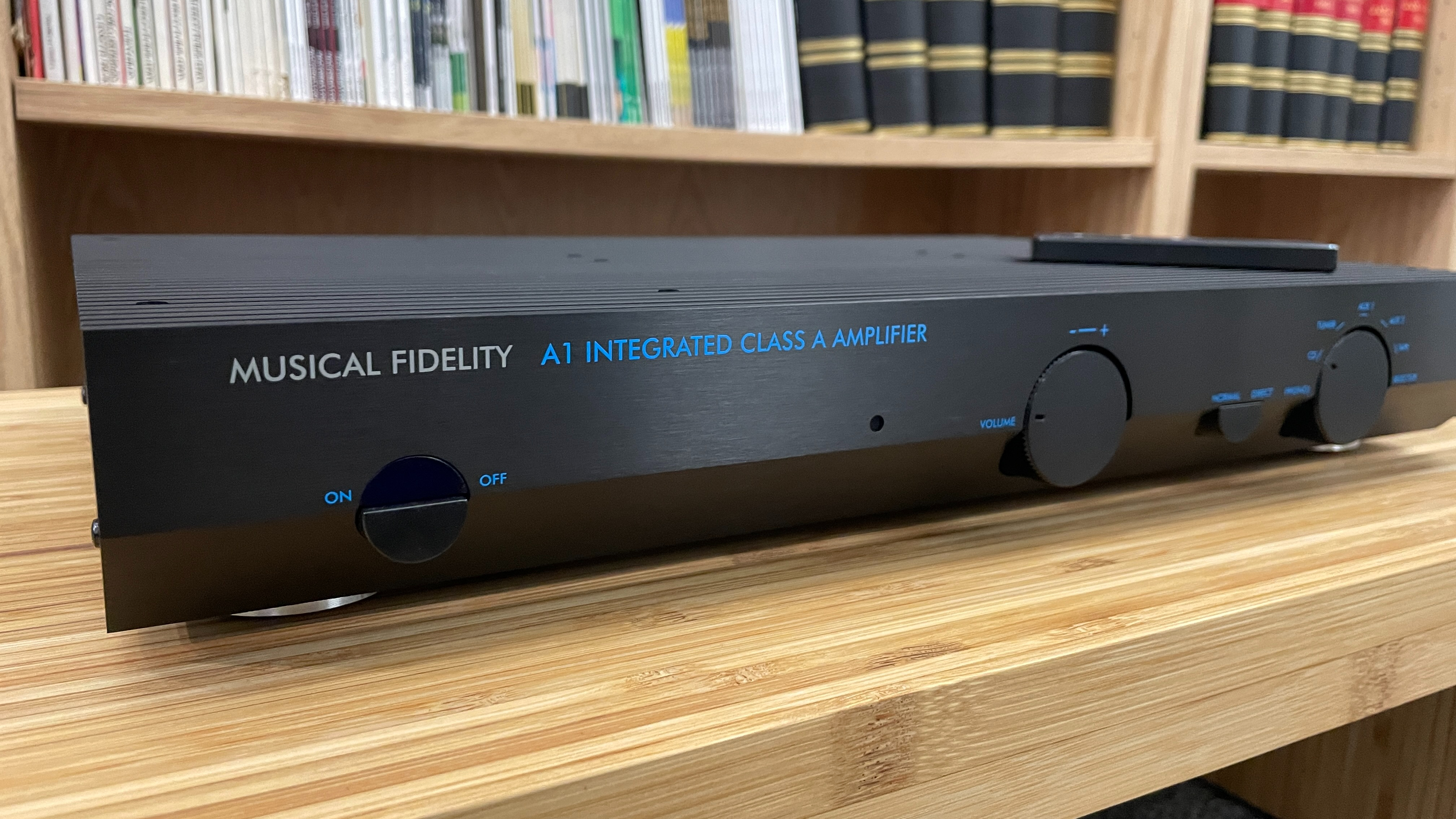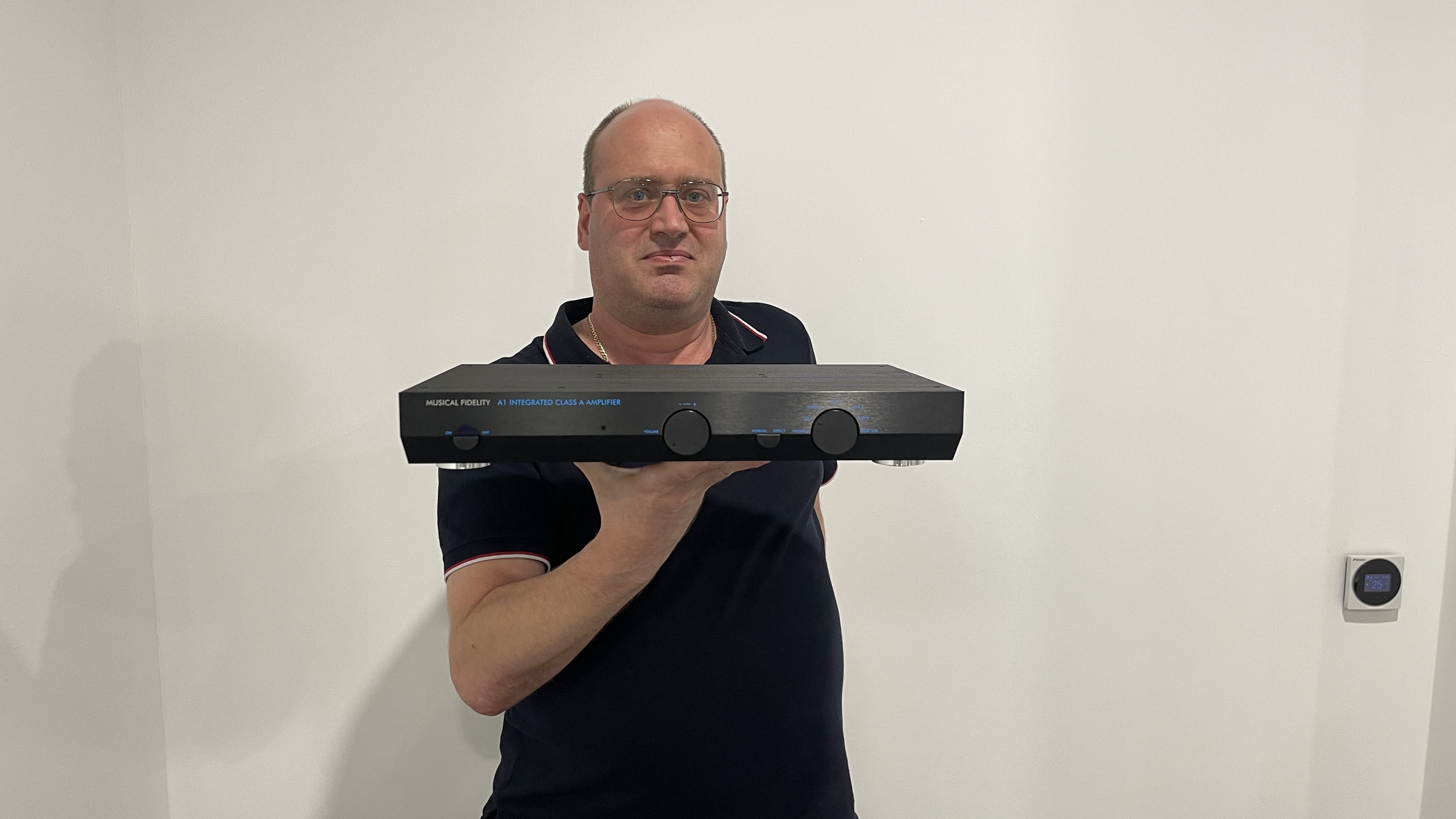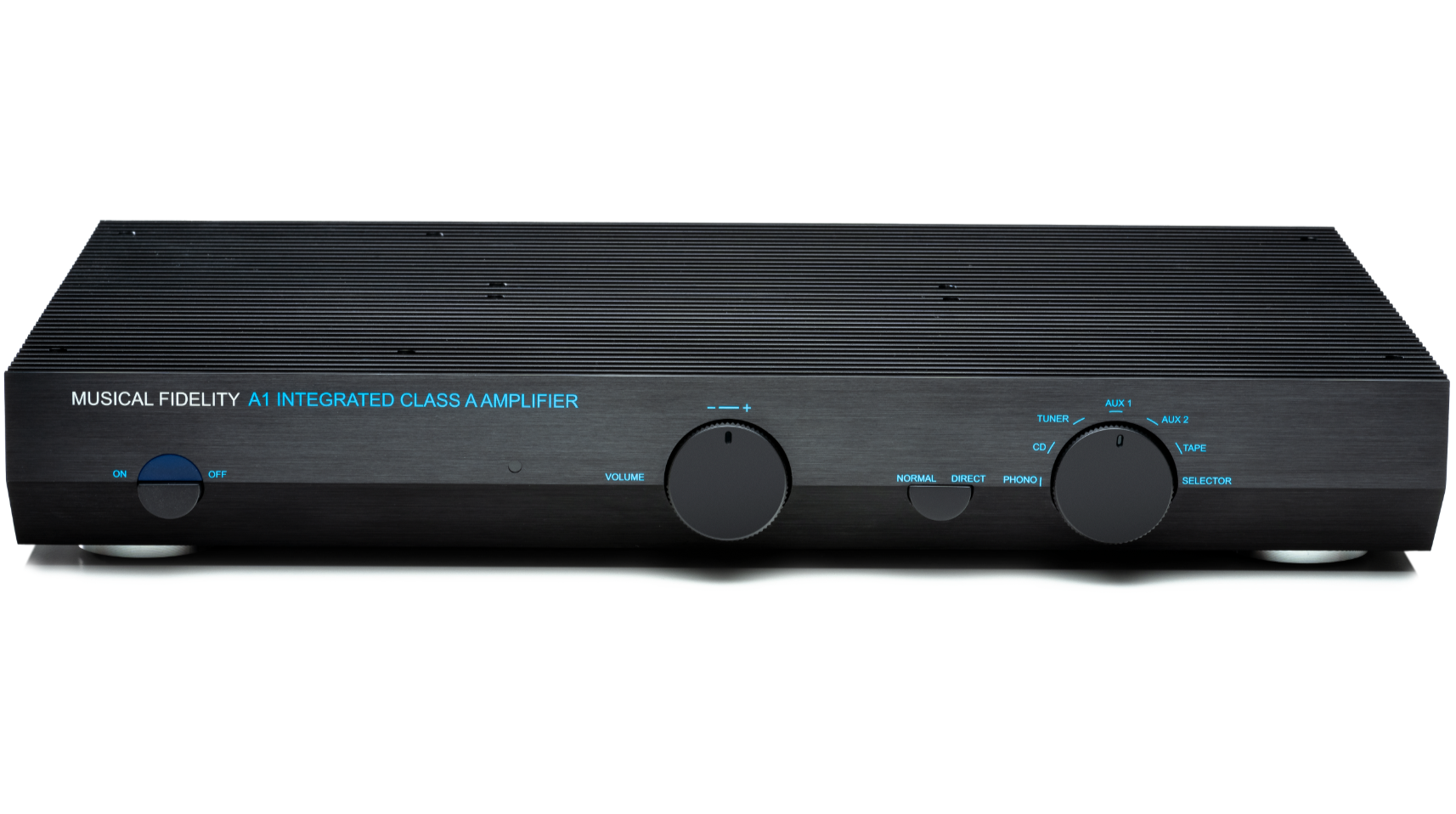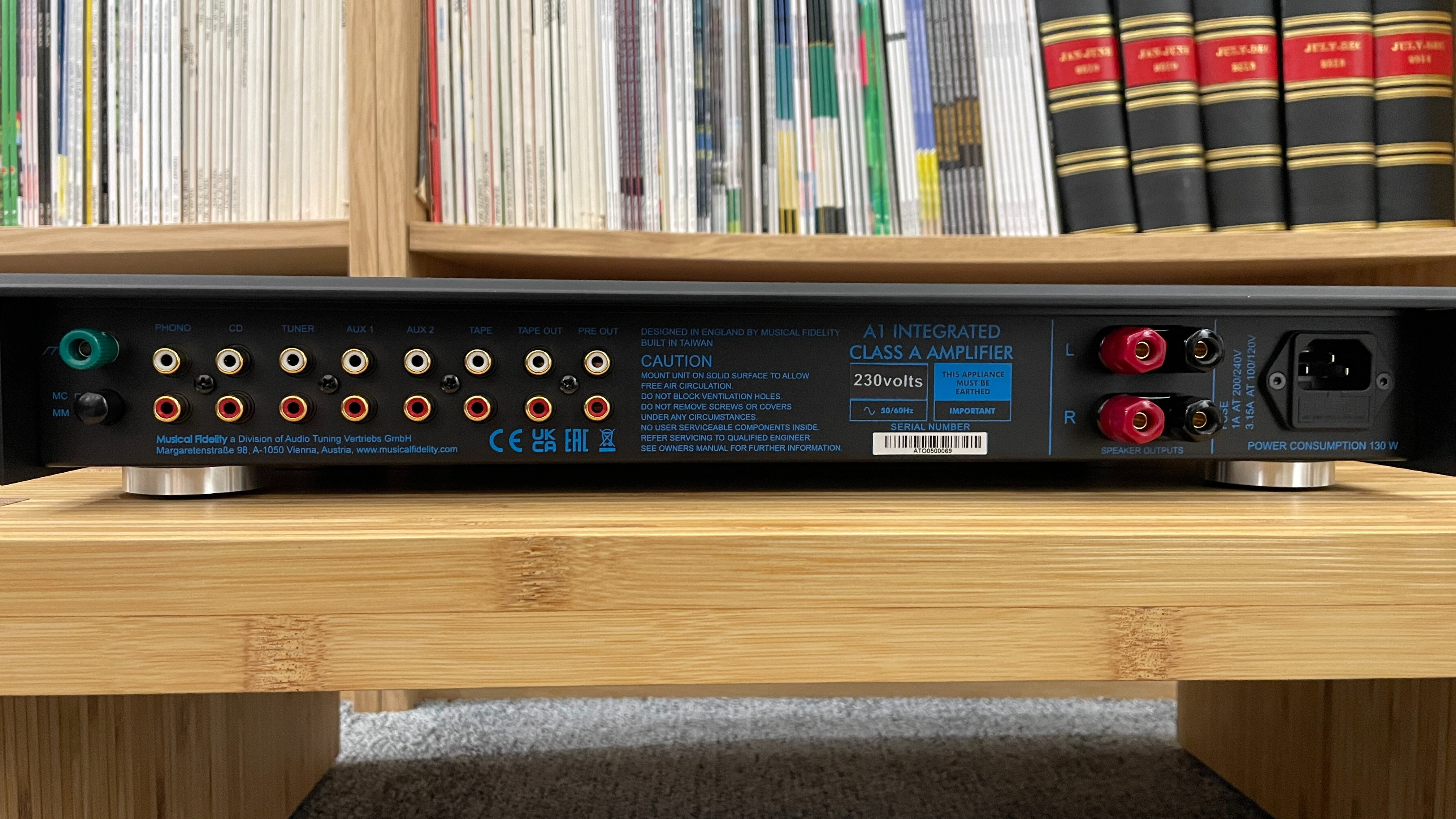
Simon Quarry has worked at Musical Fidelity for more than 20 years and is the engineer responsible for resurrecting the company's A1 amplifier. It wasn't a simple job given the more restrictive legal requirements of today and the need to maintain the much-loved character of the mid-80s original. We talk with Simon about his career, the various Musical Fidelity products he has worked on and what makes the A1 such a desirable amplifier.
What Hi-Fi?: What is your job title and role at Musical Fidelity?
Simon Quarry: My job title is Audio Designer. In that role, I design and re-evaluate the analogue sections in Musical Fidelity products – both new and historical – and have a hand in the concept and design of casework, digital control, etc.
When did you start at the company, and what did you do before?
I joined Musical Fidelity in February 2001 when founder Antony Michaelson was in charge. I started as an IT assistant, as I'd spent my employed years up till then building custom-made IBM PCs and compatibles for various companies. Back then, I did audio electronics as a hobby, buying up many magazines and kits/bits from Maplin and from the Edgeware Road, while both were still active.
My first task with Musical Fidelity was soldering up some CMYK to RGB boxes to test DVD-1 projector outputs for the US market. They all worked first time. I was then ushered into soldering up prototype CD-Pre main boards, which were quite complex but also worked well. The rest is history, as it is always said.
In 2018 I left to work on another project outside the hi-fi industry. But I returned to Musical Fidelity in 2019, not long after Heinz Lichtenegger and his Audio Tuning group purchased the company. After re-joining, my first project was the M8xi integrated amplifier and later the new Nu-Vista Series, which we began releasing earlier this year.

Of all the Musical Fidelity products you've worked on, which ones are you proudest of?
The M5si was my first major project for the company. I paid close attention to the layout, especially in the power amplifier stages, and when it was first listened to by the whole department, we were amazed at its sound. My close second favourite was the M6500i; I also had quite a bit of influence in that design.
Lastly, it is the KW250s, which was a 250W dual mono integrated including DAB/FM tuner, DAC, CD player and valve preamp stage. The KW250s was a single embodiment of all that Musical Fidelity had perfected over the years and in an exceedingly robust casework to boot.

Why bring back the A1?
By a quirk of fate, when I first joined Musical Fidelity, I spent my spare time studying the company's historical schematics and looking at the various units that came in for repair. I always admired the A1 design, but the opportunity rarely arose to consider reintroducing old designs in those years. Instead, it took Mr Lichtenegger and his irresistible passion for the A1 for us to start this project.
Heinz has described bringing back the A1 as fulfilling one of his hi-fi dreams. It impacted his life so strongly as a product and was one of his first major successes as a budding distributor in Austria. So, when he acquired the brand, this was always an idea in his head, and today we can do it.
That's the "who", as for the "why", we have one reason; it proves that high-end sound doesn't have to cost the earth. It simply makes music like nothing else.
Did you ever consider making a modern version rather than a faithful remake?
We did. In 2008 there was an A1 model we produced that was inspired by the original A1 aesthetically and technically. Still, it was based on different circuit layouts, resulting in a different sound type. That wasn't the intention this time around.

What do you think makes the A1 special?
A key aspect of the A1's unique appeal is the symmetrical top-and-bottom circuitry as well as its Class-A biased output stage that is not limited to its standing current. This approach means speakers that dip in impedance are still allowed yet more output current if required. At this point, as the output stage is already drawing substantial current, there are no switching artefacts to spoil the quality of the experience.
What is Class A circuitry? Is it better?
This is where the output devices are not just slightly switched on. They are drawing full current all the time. This technique remains valid throughout the whole audio cycle too. Whether or not it is better is more for the individual to decide. You can see within the Musical Fidelity range, we even offer different solutions. A well-designed Class A amplifier like the A1 gives you wonderful musicality, and I would encourage anyone to try it.

What are the differences between the original 1980s A1 and the new one?
The brief was to remake the original with as few changes as possible. The new A1 design features properly rated main electrolytics, newer output devices and a better layout, particularly around the phono stage. We added a second power supply, so each power amplifier runs dual mono with its own separate supply for better power handling and channel separation.
The active volume control was deemed problematic, especially in amplifying channel mismatch in the potentiometer used, so it was abandoned for conventional volume control with its inherent better matching.
In all other aspects, it remains true to the original design, so the overall sound is not affected. The original layout also made sense and remained relatively unchanged save for making the layout of both channels completely identical.
The bigger outer case, which is now a full 440mm width, and the expanded internal design allow us more leeway to keep the operating temperature within safe limits.
How would you describe the sound of the new A1?
Smooth, warm, and detailed. I have had the prototype A1 happily playing on my test bench for the last ten months or so and it has been driving quite a few different speakers. It never ceases to seduce with its silky output and inviting but meticulous rendering of all my music from energetic to ambient.

The old A1 was famed for running on the edge as far as heat output was concerned. What have you done to improve this aspect with the new one?
The 2023 model has a bigger case and more ventilation, and we also opened the airflow inside. These changes allowed us to bias the amplifier a bit higher than some of the later originals while remaining within temperature constraints.
What reference hi-fi system did you use when developing the design?
No other design was used, nor was it relevant. At the project beginning, an old, battered A1 was shipped to me, which I fixed to the original spec and used for guidance. We have used a variety of speakers throughout the testing phase, though, including our new LS3/5A design, and we've tested with different analogue and digital source devices.
What are your favourite test tracks?
I think you may regret asking this, and there is so much I listen to!
Set The Controls For The Heart Of The Sun by Pink Floyd
Owl Stretching Time by OTT
Low Desert Punk by Brant Bjork
The Man From Wales by Oresund Space Collective
Reflection by Tool
Tomorrow Never Knows by Electric Moon
This is a relatively low-powered amplifier. What speakers would you recommend to partner with it?
Due to the amp's 20W +/- rating, I had always thought that only high-efficiency 89dB/W + speakers would be most suitable. But I was proven wrong. A pair of our new LS3/5A (82dB/W) landed on my desk earlier this year and partnered excellently with the A1. Remember that this set-up was in an open, unpartitioned corner of the warehouse, so it certainly wasn't very enclosed.
For larger listening rooms, The A1 and LS3/5s certainly filled the large and loud listening room at the Munich High End Show with no real problem. Therefore, I see no real issue with standard size and quieter spaces. BUT… if you really want every ounce of efficiency at headbanging levels, try a more sensitive speaker of your choice!

What would you have changed about the design if you didn't have to be so faithful to the original?
I had some inner circuit ideas to change, but it would possibly have reverted to a more clinical modern version, not the old A1 sound at all. This would have been against the project's intention, which was to bring back an iconic product for a new generation of music lovers.
Do you think analogue amplifiers have improved significantly since the original was made?
Yes, there has been much progress in understanding and application of components. Amplifiers themselves have come a long way, like this symmetrical circuit and the more standard LTP (Long Tailed Pair) circuits, all having ever better technical specifications, particularly at higher audio frequencies. Noise has also diminished due to inbuilt features in the circuitry not fully understood in the earlier years.
However, a comparably nice sounding amplifier is not always technically superior, vis-a-vis the ongoing popularity of valve amplifiers (to which I am also partial). We must not ignore this fact and become involved in a race to the bottom for what could turn out to be sterile-sounding technical perfection – this performance destination is the antithesis of the A1 ethic.
MORE:
Read our new Musical Fidelity A1 review
That Was Then... Musical Fidelity A1 (1985)
Class A, Class A/B and Class D amplification: what does it mean for amplifiers?
We pick the best stereo amplifiers of What Hi-Fi?'s lifetime







